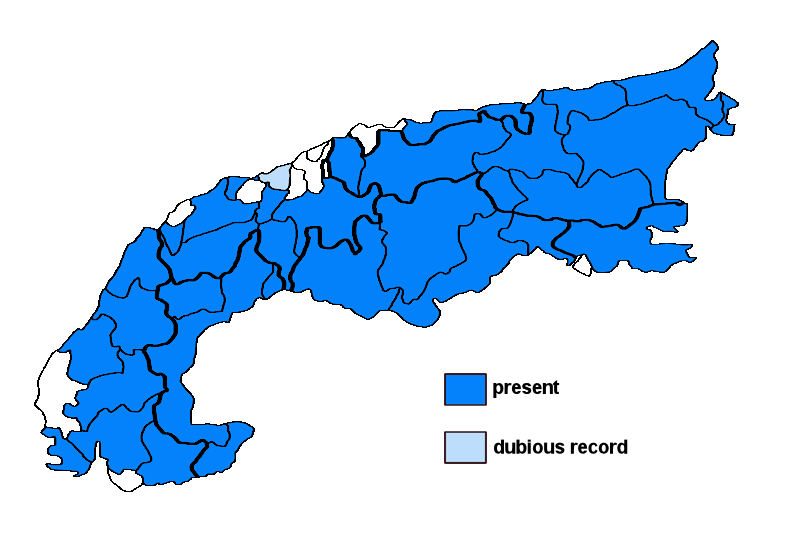Aspicilia cinerea (L.) Körb.
Syn.: Aspicilia depressa (Ach.) Anzi, Lecanora cinerea (L.) Sommerf., Lecanora excipularis H. Magn. nomen sed non planta, Lichen cinereus L., Parmelia cinerea (L.) Hepp, Sagedia depressa Ach., Urceolaria cinerea (L.) Ach.
Lichenised.
Substrate: siliceous rocks, intermediate rocks (such as calciferous schists), bark
Altitudinal range: from the submediterranean/colline belt (potential vegetation: mixed deciduous forests dominated by Quercus and Carpinus) to the alpine belt (potential vegetation: treeless Alpine grasslands and tundras, to the lower limit of perennial snow and the equilibrium line of glaciers)
Note: on acid to basic siliceous rocks wetted by rain. Taken in the broadest sense, this is a holarctic and probably bipolar, extremely variable lichen, widespread from subtropical to arctic areas. Material from the Alps should be also compared with A. calcitrapa Cl. Roux & Nordin, with which the species has been frequently confused (see Roux et coll. 2014). In the Alps it has been often confused with other Aspicilia-species (A. bricconensis, A. prestensis, A. spermatomanes, see Roux et coll. 2014).
Austria: Vorarlberg; Tirol; Salzburg; Kärnten; Steiermark; Oberösterreich; Niederösterreich (incl. Wien); Burgenland; Germany: Oberbayern; Switzerland: Bern; Graubünden; Luzern; ?Schwyz; Ticino; Uri; Vaud; Valais; France: Alpes-de-Haute-Provence; Haute-Alpes; Alpes-Maritimes; Isère; Savoie; Haute-Savoie; Vaucluse; Italy: Friuli; Veneto; Trentino Alto Adige; Lombardia; Piemonte; Valle d'Aosta; Liguria; Slovenia: Alpine and Pre-Alpine Slovenia;





